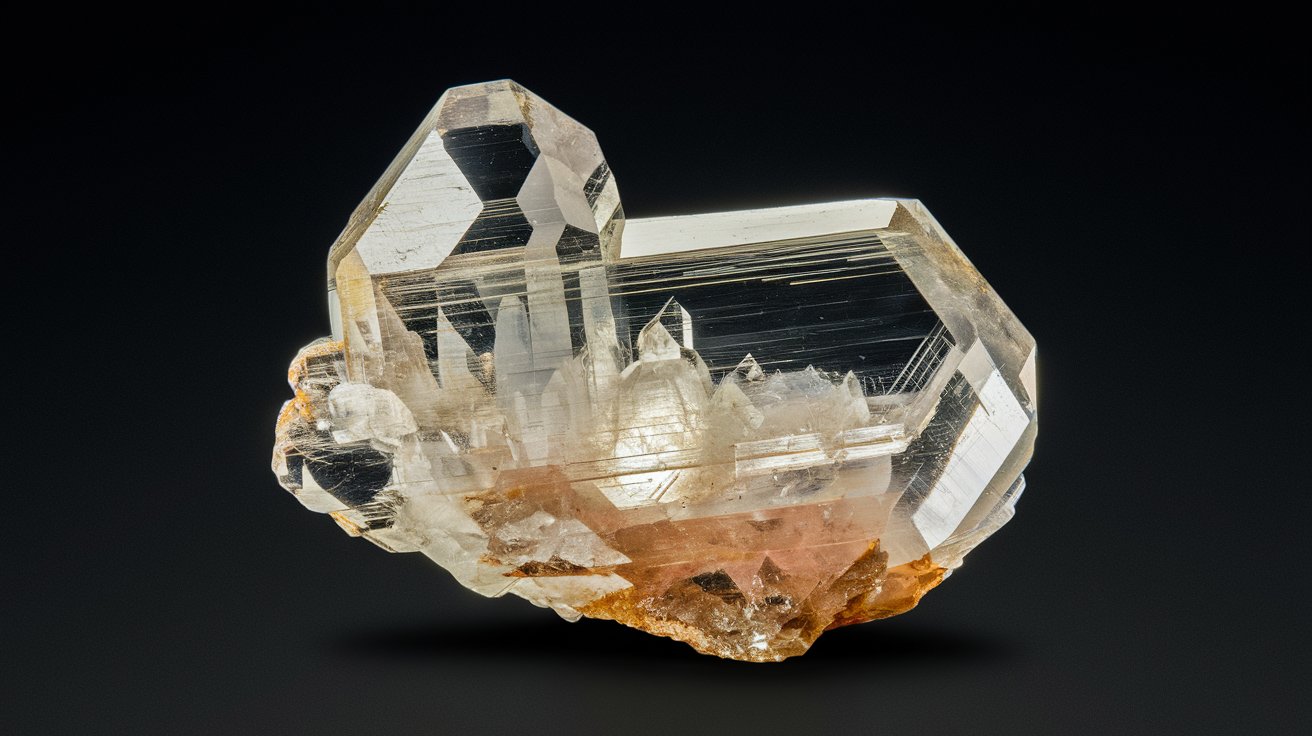
Antarctica, the southernmost continent on Earth, is a land of extremes and mysteries. Did you know Antarctica holds about 70% of the world's freshwater? This icy expanse, covering roughly 14 million square kilometers, is not just the coldest place on Earth but also the windiest and driest. Beneath its thick ice sheets lie hidden lakes, vast mountain ranges, and even active volcanoes. Despite its harsh conditions, Antarctica is a hub for scientific research, offering insights into climate change and unique ecosystems. From katabatic winds to subglacial lakes, this continent continues to captivate scientists and adventurers alike.
Key Takeaways:
- Antarctica, the icy giant, holds 70% of the world's freshwater and plays a crucial role in regulating global climate patterns. Its extreme weather, hidden wonders, and unique ecosystems make it a fascinating subject for scientists and explorers.
- Despite its harsh conditions, Antarctica supports unique ecosystems and provides valuable insights into climate change through scientific research. From penguin populations to wind patterns, this icy continent offers a window into life's diversity and resilience.
Antarctica: The Icy Giant
Antarctica, the southernmost continent, is a land of extremes. Its vast ice sheets, hidden lakes, and unique ecosystems make it a fascinating subject for scientists and explorers. Let's dive into some intriguing facts about this icy giant.
-
Location and Size
Antarctica is located at the South Pole and spans approximately 14 million square kilometers (5.4 million square miles), making it the fifth-largest continent. -
Geography
Surrounded by the Southern Ocean, Antarctica plays a crucial role in regulating global climate patterns and is home to diverse marine life. -
Ice Coverage
The Antarctic Ice Sheet is the largest mass of ice in the world, up to four miles thick in some areas, containing about 90% of the planet's freshwater ice. -
Freshwater Reserve
Antarctica holds around 70% of the world's freshwater, stored in its ice sheets and glaciers, making it a vital part of Earth's water cycle.
Extreme Climate and Weather
Antarctica's climate is one of the harshest on Earth. From bone-chilling temperatures to fierce winds, let's explore the extreme weather conditions of this frozen land.
-
Climate
Antarctica is the coldest continent, with temperatures ranging from -4 to -22 °F (-20 to -30 °C) on the coast during the coldest months and dropping as low as -128.6 °F (-89.2 °C) at Vostok Station. -
Wind Speeds
Antarctica is the windiest place on Earth, with katabatic winds reaching up to 200 miles per hour (320 kilometers per hour). -
Precipitation
Despite its icy landscape, Antarctica is a polar desert, receiving very little precipitation. The Dry Valleys have seen no significant rainfall for nearly 2 million years.
Hidden Wonders Beneath the Ice
Beneath Antarctica's thick ice lies a world of hidden wonders, from vast mountain ranges to mysterious subglacial lakes.
-
Mountain Ranges
Antarctica has some of the world's largest mountain ranges, like the Transantarctic Mountains, which are about 2,000 miles (3,200 kilometers) long. -
Gamburtsev Mountains
The Gamburtsev Mountains stretch over 1,200 kilometers (750 miles) and reach heights of approximately 2,700 meters (8,900 feet). -
Lake Vostok
Lake Vostok, a hidden freshwater lake about the size of Lake Ontario, lies buried under more than 2 miles (3.7 kilometers) of solid ice. -
Canyons
Antarctica has a massive canyon, possibly larger than the Grand Canyon, approximately 100 kilometers (62 miles) long, 9 kilometers (5.6 miles) wide, and over 1.6 kilometers (1 mile) deep.
Volcanic Activity and Research
Despite its icy exterior, Antarctica is home to active volcanoes and numerous research stations that contribute to our understanding of the continent and beyond.
-
Volcanoes
Antarctica hosts several active volcanoes, including Mount Erebus, the southernmost active volcano in the world, featuring the only known "lava lakes." -
Research Stations
Around 4,000 scientists and support staff from 30 countries inhabit research stations during the summer, with numbers dropping to about 1,000 in winter. -
Births on Antarctica
Only 11 people have been born on Antarctica, with the first recorded birth in January 1979.
Unique Sunlight Patterns and Ice Dynamics
Antarctica's unique position on Earth results in unusual sunlight patterns and dynamic ice shelf activities.
-
Sunlight Patterns
Due to Earth's tilt, Antarctica experiences continuous darkness from the vernal equinox to the autumnal equinox and continuous daylight during the summer months. -
Ice Shelf Break-Offs
In March 2000, an ice chunk the size of Connecticut broke off the Ross Ice Shelf, highlighting the dynamic nature of Antarctica's ice shelves.
Salty Lakes and Historical Exploration
Antarctica's unique features include incredibly salty lakes and a rich history of exploration.
-
Salty Lakes
Deep Lake in Antarctica is so salty that it cannot freeze, even at temperatures as low as -15 degrees Celsius (5 degrees Fahrenheit). -
Historical Exploration
Norwegian explorer Roald Amundsen made the first confirmed landing on Antarctica in 1911, followed by British explorer Robert Falcon Scott.
Unique Ecosystems and Climate Change Insights
Antarctica supports unique ecosystems and provides valuable insights into climate change through scientific research.
-
No Native Land Mammals
Antarctica has no native land mammals, but marine mammals like seals and whales are common in its surrounding waters. -
Climate Change Insights
Ice-core drilling in Antarctica has provided valuable records of past climates, helping scientists understand current climate trends. -
Ozone Hole
The ozone hole, discovered in the 1980s, is most prominent over Antarctica, affecting global climate patterns. -
Fungi Diversity
Despite its harsh conditions, Antarctica hosts 1,150 different species of fungi, showcasing the resilience of life in extreme environments.
Time Zones and Meteorites
Antarctica's unique position also affects time zones and makes it an excellent place for finding meteorites.
-
Time Zones
Every longitude line meets at the poles, meaning Antarctica technically contains every time zone. -
Meteorites
Antarctica is one of the best places to find meteorites, as the black masses stand out against the snow and ice flows concentrate them in specific areas.
Tourism and Iceberg Size
Antarctica's unique allure attracts tourists, and its icebergs can be massive.
-
Tourism
Approximately 30,000 tourists visit Antarctica each year, up from 10,000 a decade ago. -
Iceberg Size
In 2000, possibly the largest iceberg ever recorded broke off from the Ross Ice Shelf, measuring 187 miles long and 23 miles wide.
Temperature Records and Geological History
Antarctica holds temperature records and has a fascinating geological history.
-
Temperature Records
The lowest natural temperature ever recorded on Earth was at Antarctica’s Vostok Station, reaching -128.6°F (-89.2°C) in 1983. -
Geological History
Antarctica was once part of the supercontinent Gondwana and drifted to its current location over millions of years.
Antarctic Treaty and Scientific Discoveries
The Antarctic Treaty ensures peaceful use of the continent, which continues to be a hub for scientific discoveries.
-
Antarctic Treaty
Signed in December 1959, the Antarctic Treaty ensures Antarctica is used for peaceful purposes. As of 2024, 56 countries are signatories. -
Scientific Discoveries
Antarctica has been a hub for scientific discoveries, from studying ice cores to exploring subglacial lakes.
Penguin Populations and Dry Valleys
Antarctica is home to unique wildlife and some of the driest places on Earth.
-
Penguin Populations
Emperor penguins, one of the largest penguin species, inhabit Antarctica and are well adapted to its harsh environment. -
Dry Valleys
The Dry Valleys are some of the driest places on Earth, with NASA conducting 'Viking' tests there to prepare for Mars missions.
Wind Patterns and Ice Sheet Melting
Antarctica's wind patterns and ice sheets play crucial roles in its climate and global sea levels.
-
Wind Patterns
Katabatic winds, formed by the descent of cold air from the Antarctic mountain ranges, can reach speeds of up to 200 miles per hour (320 kilometers per hour). -
Ice Sheet Melting
If the West Antarctic Ice Sheet were to melt entirely, it would raise global sea levels by about 16 feet (4.9 meters).
Unique Ecosystems
Despite its harsh environment, Antarctica supports unique ecosystems that offer insights into life's diversity and resilience.
- Unique Ecosystems
Subglacial lakes like Lake Vostok and the Dry Valleys provide habitats for extremophiles, organisms that thrive in extreme conditions.
Antarctica: A Land of Extremes
Antarctica stands as a testament to Earth's incredible diversity and extremes. From its vast ice sheets holding 70% of the world's freshwater to the bone-chilling temperatures at Vostok Station, this continent is a marvel. Hidden beneath the ice are mountain ranges like the Gamburtsev Mountains and subglacial lakes like Lake Vostok, each holding secrets waiting to be uncovered. Despite its harsh conditions, Antarctica supports unique ecosystems and has become a hub for scientific research. The Antarctic Treaty ensures this land remains a place for peaceful exploration and study. Whether it's the dynamic ice shelves, the resilient fungi, or the fascinating history of exploration, Antarctica continues to captivate our imagination. This icy continent is not just a frozen wasteland but a vital part of our planet, offering insights into climate change, geology, and the resilience of life.
Frequently Asked Questions
Was this page helpful?
Our commitment to delivering trustworthy and engaging content is at the heart of what we do. Each fact on our site is contributed by real users like you, bringing a wealth of diverse insights and information. To ensure the highest standards of accuracy and reliability, our dedicated editors meticulously review each submission. This process guarantees that the facts we share are not only fascinating but also credible. Trust in our commitment to quality and authenticity as you explore and learn with us.


